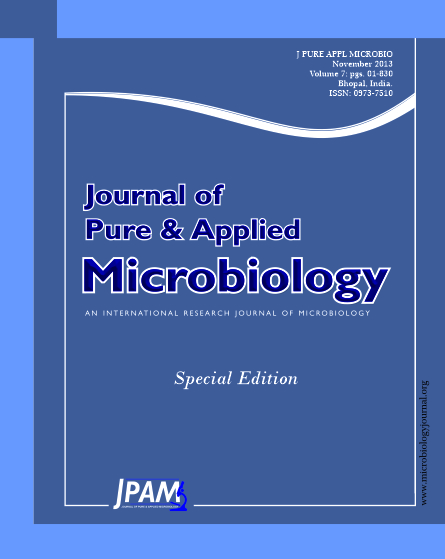Fusarium species are worldwide causal agents of huge damage of storage cereals. Moreover their toxigenic potential is a health risk for both humans and animals. In the present work infected seed samples of maize were collected from local markets in Egypt. Thirteen isolates of Fusarium species were initially identified by phenotype based methods then genotyped using the partial sequence of translation elongation factor-1a (TEF1-a) gene. Furthermore, fumonisin-producing isolates were identified using species-specific primers (PQF5-F/PQF5-R) and (FUM5P2-F/FUM5P2-R) based on partial sequence of FUM1 gene. The results indicated that an amplicon of 60-bp for four isolates identified as F. proliferatum and an amplicon of 70-bp amplicon for three isolates identified as F. moniliforme were generated. Five strains of lactic acid bacteria (LAB) viz. Lactobacillus delbrueckii subsp. lactis DSM 20076, Lactobacillus acidophilus DSM 20079, Pediococcus acidilactici NNRL B-5627, Lactobacillus. sakei LB 706 and Enterococcus faecalis were screened for their ability to inhibit Fusarium isolates growth and/or bind fumonisin B1. Lb. delbrueckii subsp. lactis DSM 20076 was the most efficient strain at removing fumonisin B1 toxin (76.67 %). However, Lb. acidophilus DSM 20079, Lb. sakei LB 706 and P. acidilactici NNRL B-5627 showed the greatest inhibitory effect against Fusarium isolates. Therefore the use of LAB as a source of natural antimycotic and antimycotoxin agents showed promising, economical and successful strategy for preserving food products from Fusarium spoilage.
Maize, Fusarium, Fumonisin, PCR, Lactic acid bacteria, Antifungal, Toxin binding
© The Author(s) 2013. Open Access. This article is distributed under the terms of the Creative Commons Attribution 4.0 International License which permits unrestricted use, sharing, distribution, and reproduction in any medium, provided you give appropriate credit to the original author(s) and the source, provide a link to the Creative Commons license, and indicate if changes were made.


